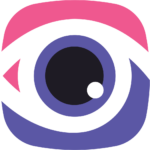Maximize vision therapy results with this non-invasive approach that enhances visual skills and treats conditions like lazy eye, double vision, and convergence insufficiency. Effective for all ages, success depends on consistency and the right techniques. This guide explains how vision therapy works and shares six tips to improve outcomes.
Imagine you’re in your 30s, struggling to read for long periods or feeling eye strain after a day at work. You’ve heard about vision therapy but wonder: “Isn’t that just for kids?” If this sounds familiar, you’re not alone. Many adults do face visual challenges, and the good news is vision therapy isn’t just for children.
Vision therapy helps retrain the eyes and brain to work together, improving overall vision quality. Whether you’re dealing with longstanding issues or newly developed symptoms, this article will explain how vision therapy works for adults and offer actionable tips to get the most out of your treatment.
What Is Vision Therapy for Adults?
Vision therapy is a structured program that uses exercises and activities to address vision problems. These sessions are supervised by a vision care professional and tailored to individual needs. It’s not about replacing glasses or contact lenses—it’s about improving how your eyes and brain communicate.
Common conditions vision therapy can treat:
- Amblyopia (lazy eye)
- Strabismus (crossed eyes)
- Convergence insufficiency (difficulty focusing on close objects)
- Double vision
- Visual processing disorders
Want to know if Vision Therapy is right for you? Check out our guide about What Conditions Are Treated by Vision Therapy?
Pro Tip: Check out Bates method Better Eyesight Without Glasses
Benefits of Vision Therapy for Adults
- Improves Visual Efficiency: Enhances focus, tracking, and eye coordination.
- Relieves Symptoms: Reduces headaches, eye strain, and fatigue.
- Increases Productivity: Supports better performance at work or during daily tasks.
6 Tips to Maximize Vision Therapy Results
1. Be Consistent with Practice
Success in vision therapy relies on regular practice, both during sessions and at home.
- Schedule daily home exercises.
- Stick to the routine recommended by your optometrist.
2. Communicate with Your Therapist
Share feedback about your progress and challenges.
- Let them know if exercises feel too easy or too hard.
- Adjustments ensure the therapy stays effective.
3. Incorporate Digital Tools
Apps like VisionUp can enhance your therapy experience.
| Feature | Benefit |
| Guided exercises | Complements in-person sessions |
| Progress tracking | Monitors improvements over time |
| Accessibility | Convenient for busy schedules |
4. Maintain a Healthy Lifestyle
Your overall health impacts your vision therapy success.
- Stay hydrated.
- Get plenty of sleep to support eye health.
- Practice good nutrition (think leafy greens and omega-3s).
5. Use Rest Breaks Wisely
Follow the 20-20-20 rule: every 20 minutes, look at something 20 feet away for 20 seconds.
- Reduces eye strain.
- Improves focus and endurance for therapy exercises.
6. Stay Patient and Positive
Results don’t happen overnight. Set realistic expectations and celebrate small wins.
Pros and Cons of Vision Therapy for Adults
| Pros | Cons |
| Non-invasive and drug-free | Requires consistent effort and time |
| Customizable to individual needs | Results can take weeks or months |
| Improves long-term vision skills | May not be covered by all insurance plans |
How Long Does Vision Therapy Take?
The timeline varies by individual and condition severity. On average:
| Condition | Typical Duration |
| Lazy eye | 3-6 months |
| Convergence insufficiency | 10-20 weeks |
| Visual processing issues | Several months to a year |
Commitment to regular sessions and at-home exercises can shorten treatment times. You might also find Vision Therapy Success Rate: What Adults Need to Know helpful.
Alternative Solutions: Maximize Vision Therapy Results with VisionUp
While vision therapy is highly effective, tools like VisionUp can support your journey:
- Guided Exercises: Tailored to your condition.
- Progress Tracking: Helps monitor improvement.
- Flexibility: Perfect for busy adults.
VisionUp isn’t a replacement for therapy but an excellent complement to your sessions.
Conclusion
Vision therapy offers adults a way to address visual challenges and improve overall quality of life. Whether you’re dealing with eye strain, double vision, or lazy eye, this treatment can help—but it takes commitment and effort to maximize results.
FAQs
1. Can adults benefit from vision therapy?
Yes, adults can improve conditions like lazy eye, double vision, and visual processing issues through vision therapy.
2. How long does vision therapy take?
Timelines vary, but most adults see results within 10-20 weeks for mild issues or several months for complex conditions.
3. What tools can complement vision therapy?
Apps like VisionUp provide guided exercises and progress tracking to support therapy at home.
4. Is vision therapy covered by insurance?
Coverage depends on your provider and policy. Check with your insurance company for details.
5. Can vision therapy replace glasses?
No, it complements corrective lenses by improving visual efficiency and coordination.
